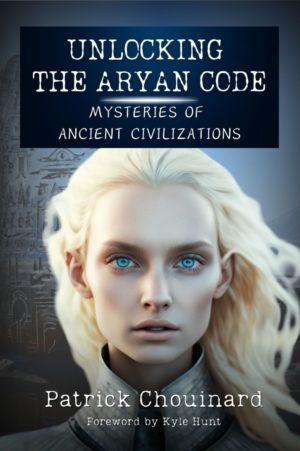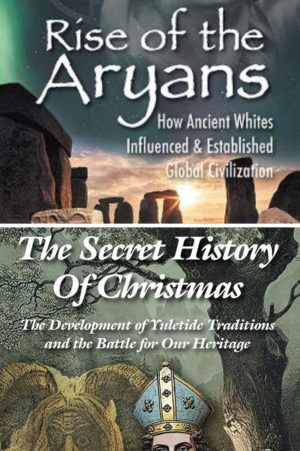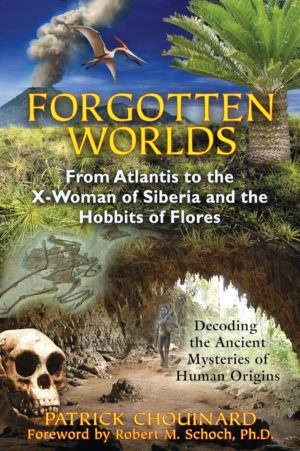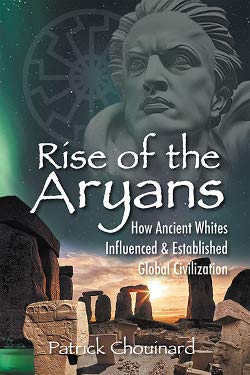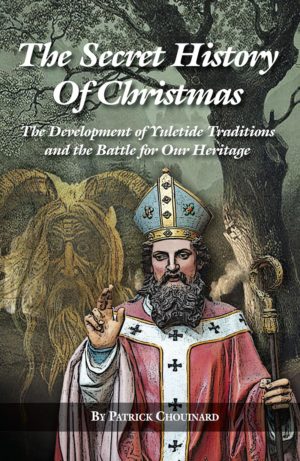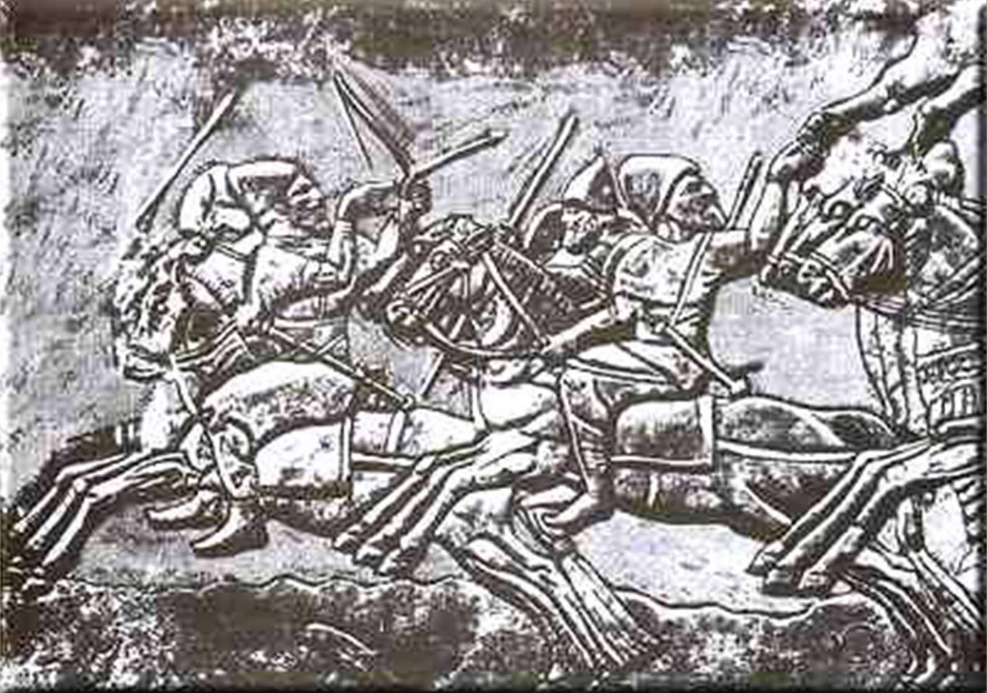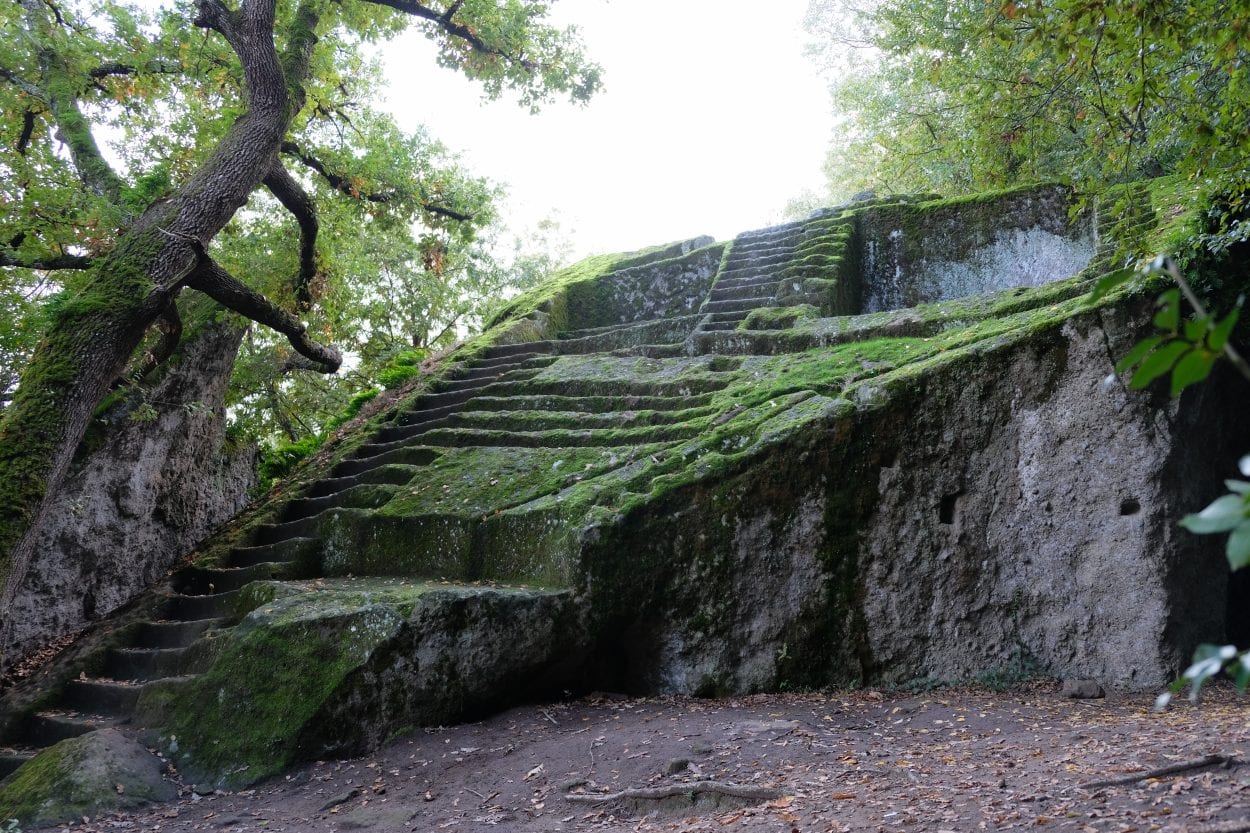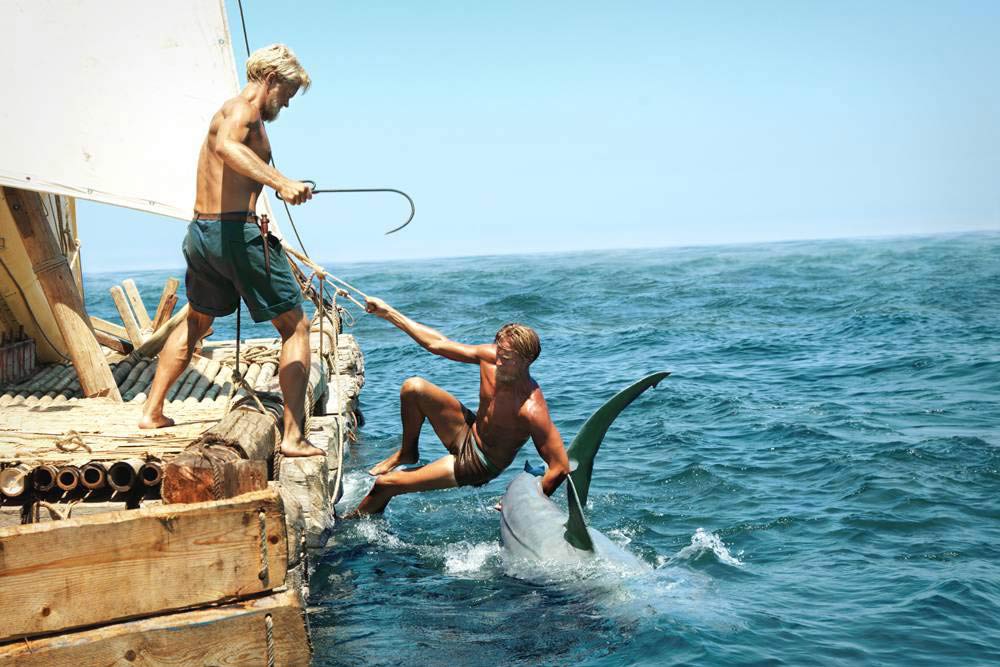The early beliefs of Northern Europe encompass a rich and sinister mythological tradition that includes not only giants, but an entire host of magical and mystical creatures. The ancient Norse divided the peoples of the world into three distinct categories: civilized people; barbarians, such as the Nordic peoples themselves; and sub-humans, such as the skraelings, or native peoples of North America. When the Vikings entered a region for the first time, they took their swords and battle axes in hand and tested them out on anyone they encountered, to determine whether they could be killed and thus were human, or whether they were invincible, which meant they were giants or members of one of the other many magical races, and therefore immortal.
Examples of the magical races include orcs, trolls, elves, half gods, and, of course, giants. All of these were very similar to the creatures that the famous author J. R. R. Tolkien wrote about in The Hobbit and The Lord of the Rings. In attempting to understand the Norse mythology, we need to understand its origins. According to late nineteenth and early twentieth century writer Donald A. Mackenzie, Celtic and Teutonic (Norse) mythology demonstrate a definite commonality. “It would appear,” he writes, “that archaic giant-lore is pre-Celtic and pre-Teutonic, and therefore implies a common inheritance. In the wars of the Olympians and Titans, of the Irish Danann gods and the Fomorachs, and of the Aesir and the Jotuns, we may have echoes of ancient racial conflicts. The old tribal peoples attributed successes to their gods, and remembered their battles as the battles of rival gods. For these giants are also gods of archaic conception. In Scotland, certain of them are associated with the fortunes of families and tribes. On the other hand, gods are but exalted giants; the boisterous Olympians find their counterpart in the boisterous Scandinavian Jotuns rather in the more refined Aesir and Vanir.” (Mackenzie 1912)
Odin, the king of the Norse gods and the Germanic equivalent of Jupiter, is in reality a one-eyed giant, a Cyclops; his eye was sacrificed to Mimir’s pool to obtain the Jotuns’ gift of divine prediction. Odin is also described as the wind god, or the Wild Huntsman. Odin’s son, Thor, was originally an oak god. The sacred tree of Odin in northern Germany was a one-thousand-year-old oak at the time of its destruction by Christian forces.
The heroes of the Teutonic culture were fierce in their determination not to be outdone by all manner of giants that they frequently fought against. Mackenzie writes:
When the tribal heroes of northern peoples were glorified by story-tellers, they were invariably depicted as giant-killers.” (Mackenzie 1912) In The History of the Kings of Britain, Geoffrey of Monmouth describes the battle between the giant-killer Corineus and the most dreaded of all giants, the diabolical Goemagot: “At the beginning of the encounter, Corineus and the giant, standing, front to front, held each other strongly in their arms, and panted aloud for breath, but Goemagot presently grasping Corineus with all his might, broke three of his ribs, two on his right side and one on his left. At which Corineus, highly enraged, roused by his whole strength and snatching him upon his shoulders, ran with him, as fast as the weight would allow him, to the next shore, and there getting upon the top of the high rock, hurled down the savage monster into the sea; where falling on the sides of the craggy rocks, he was torn to pieces, and colored the waves with his blood.” (Geoffrey and Thorpe 1966)
We see further examples of giant-slayers in the Nibelungenlied, with the mighty Aryan warrior Siegfried and Dietrich of Bern, in his Thunor character. Both are legendary and have become an integral part of Teutonic mythology and its modern interpretation. They are so inspiring that Richard Wagner successfully drew upon them in his pagan operas.
In his 1912 anthology, Teutonic Myth and Legend, Donald A. Mackenzie presents a provocative retelling of ancient German narratives. Recalling the earliest Norse accounts, he describes at length the initial events that sparked the creation of life; the birth of giants, gods, and humans; and the creation of the nine worlds. Mackenzie writes:
In the Ages, when naught else was, there yawned in space a vast and empty gulf called Ginnunga-gap. Length it had, and breadth immeasurable, and there was depth beyond comprehension. No shore was there, nor cooling wave, for there was yet no sea, and the earth was not made nor the heavens above. There in the gulf was the beginning of things. There, time first dawned . . . northward of the gulf, Nifelheim, the immense home of misty darkness and freezing cold, and to the south, Muspelheim, the luminous home of warmth and of light. In the midst of Nifelheim burst forth the great fountain from whence all waters flow, and to which all waters return. It is named Hvergelmer, “the roaring cauldron”, and from it surged, at the beginning, twelve tremendous rivers called Elivagar, that washed southwards toward the gulf. A vast distance they traversed from their source, and then the venom that was swept with them began to harden, as does dross pouring from a surface, until they congealed and became ice. Whereupon the rivers grew silent and ceased to move, and gigantic blocks of ice stood still. Vapor arose from the ice-venom and was frozen to rime; layer upon layer heaped up in fantastic forms one above another. That part of the gulf which lay northward was a region of horror and of strife. Heavy masses of black vapor enveloped the ice, and within were screaming whirlwinds that never ceased, and dismal banks of fleeting mist. But southward Muspelheim glowed with intense radiance. Muspelheim is also associated with a great fire giant, Surtur, who possessed a flaming sword with which he guarded the gates to the realm of fire. Sparks, perhaps cast by Surtur’s sword, penetrated the world of darkness and bitter cold. Drops of moisture then began to fall from the ice. Out of a frozen cocoon of hoarfrost and rime emerged the first being. Dark and formless, it eventually coalesced into something humanlike. At that moment the frost giant Ymir stood upright for the first time and surveyed his new domain. Ymir was called a Hrim-thurs, or ice giant, and was the personification of the frozen ocean.” (Guerber 1909).
When surveying his domain, Ymir caught sight of the bulging, voluptuous cow Audhumbla, licking her way through one of the many melting icebergs of hoarfrost and rime. Groping toward her, Ymir discovered the fresh, white milk flowing from her teats. Kneeling beside her, he gulped down the rich, frothy milk and allowed it to nourish and energize his body. He then wiped the hanging phlegm from his lips and emitted an echoing belch that reverberated throughout the ice field. Audhumbla then continued to lick the thick blocks of rime around her, after which another being, Buri, a god, also known as “the producer,” emerged from the ice. Buri was a fully formed deity, the first of his kind, according to Icelandic tradition. After the giant cow engaged Ymir, the mighty ice giant fell into a deep sleep. While he rested, a son and daughter were born from the sweat beneath his armpits. From his feet was born Thrud, the six-headed giant, who in turn birthed Bergelmir, the ancestor of all the subsequent frost giants. Buri produced a son named Borr, instantaneously, without the use of sexual reproduction, much the way Ymir produced his earliest descendants. Once the giants became aware of the new deities’ presence, they began to wage war against the gods. This became a protracted conflict with no end in sight—at least until Borr married the giantess Bestla, the giant Bolthorn’s daughter. Bestla gave Borr three sons: Odin, Vili, and Ve, the first of the Aesir clan. Because Odin and the Aesir descended from the giant Bolthorn’s daughter, it is quite clear that the gods themselves possessed the genetic makeup and physical appearance of giants in terms of size. To end the ongoing battle between the gods and the giants, Odin, Vili, and Ve hatched a grievous plot. They ultimately decided to ambush Ymir and murder him. When they slit his throat, in yet another allusion to the Great Flood, a great deluge of blood rushed forth, which drowned most of the giants. Bergelmir and his wife escaped in a boat to found a new realm called Jotunheim. The world as we know it, Midgard, was formed from the body of Ymir. His salty, watery blood then became the oceans, rivers, and lakes; his flesh became the earth; his bones, the rocks and mountains; his hair, the forests; and the maggots from inside his stomach, the dwarves. When the first giant, Ymir, slumped down upon the icy ground, drowning his children in his blood, a series of events was set into motion that ultimately sealed the fate of the universe.
The Men of the North
In 600 BCE, the Greek lyric poet Alcaeus wrote a series of narratives describing a vast northern kingdom located far beyond the lands of the Germani and Keltoi. Others suggest that a race of humans evolved separately in the Arctic. If true, this would defy everything we have been taught about human evolution. Traditional sources dating as far back as the first millennium BCE describe a civilization that once existed there, when the Artic region was suitable for human habitation (Godwin 1993, 14).
More recently, author Robert Scrutton has presented his own collections of speculative texts, The Other Atlantis and Secrets of Lost Atland, to support his theory of a “proto-Viking Atlantis located in the North Sea” (Childress 1996, Kindle File). In Secrets of Lost Atland, he describes the wisdom of the ancients with enormous attention to detail, explaining that the main thrust of the prehistoric technological civilization was a “coordinated system” of “psycho-electric science or cosmology” that was employed on a global scale. Scrutton further maintains that prevailing evidence for such a system is in the “stone circles, artificial hills, sacred sites, meditation chambers and altars. All of these were connected by ley lines and underground streams that formed an energy network that surrounded the globe.” (Childress 1996).
John Michell, a genius in the science of alternative studies, supports Scrutton’s views. Michell’s work could well be considered an epilogue to this thoroughly researched topic. In 1998 near the great stone circle of Avebury, in England, Michell made the following comments in an interview with Douglas Kenyon that was part of an Atlantis Rising video presentation called “English Sacred Sites: The Atlantis Connection.” The time period he was discussing was the late Neolithic Age, which was the time period of the civilization of Old European. In Britain this was dominated by the Beaker Folk and later the Wessex culture: “[Avebury] was the great center; the land was very sacred. It was farmed only for the high priests and those who came to the festivals. There were tribes or nations who were actually responsible for it, they held the games and protected the rites of the sanctuary. If you look at this land it is all ritualized, it’s full of monuments.” (Kenyon and Michell, 1).
Hence, it was Michell’s viewpoint that Avebury, Stonehenge, and the other megalithic sites of southeastern England were in fact vast ceremonial centers for the practice of religious and spiritual activity. Researcher, aviator, and photographer Busty Taylor also appeared on the video, and he has made it his life’s work to document and find connections between the ley lines and the modern phenomenon of crop circles. Taylor and Kenyon believe that many of the stone circles now scattered across the English countryside were, in fact, built on and around ancient crop circles. According to Kenyon, many of the churches now seen in the region were actually built on sites “revered” by the ancient populace, and this in itself hints that a far older order of civilization once dominated Europe.
Scrutton’s primary source in bolstering his argument of a proto-Viking Atlantis in the North Sea is a Dutch manuscript, the Oera Linda Book. It has been acclaimed as “the oldest book in the world and a number of authors believe that this ancient book holds a key to the Atlantis riddle.” (Childress 1996). Although the book is controversial and some believe it to be a fairly recent work of fiction, others hold that it is an incredibly valuable text from the mists of history.
One story tells us that in February 1871, the year Germany was unified for the very first time, a Frisian antiquarian located the Oera Linda Book. It had been in the possession of his family “for generations” and had been “handed down from father to son as a holy obligation” (Childress 1996). Scholars were struck by the fact that it appeared to have been written in an unknown language. This mystery was soon solved, however, when it became clear that the script was an ancient form of Frisian. Scrutton describes northern Atlantis, drawing on the Oera Linda Book:
A large, semi-circular land-mass, a sort of silhouette halo around the north and east of the British Isles, was contemporary with the conjectured Atlantis. It survived the traditional Atlantis, however, by many thousands of years. Its name was Atland, and there may be reason to suppose that Atland was the archetype of the Hyperborean tradition. Although situated between what are now the storm-stricken Hebrides and the Greenland permafrost, Atland was no impoverished continent. On the contrary, its climate was subtropical, yielding abundance of everything for full and happy human existence. . . . In the year 2193 BCE, some cosmic calamity struck Earth; perhaps some imbalance proposed by Immanuel Velikovsky . . . perhaps an asteroid collided with the Earth. At any rate, from descriptions in the Oera Linda Book, something consistent with the tilting of the Earth’s axis took place and within about three days, climatic change of overwhelming severity took place. Atland was submerged and her history lost . . . or nearly so (Scrutton 1978, 1–4).
According to the Oera Linda Book, the Atlanders were a maritime people who charted the seas of the world, including the Mediterranean. They established colonies in Scandinavia, northern and southern Europe, Africa, and Greece (Childress 1996). Unlike Hancock, who places the great flood between 13,000 and 10,000 BCE, Robert Scrutton bases his chronology on the Oera Linda Book and sets it at 2193 BCE. At this time, the Atlantic tidal waves enveloped the continent of Atland and smashed into the Mediterranean. This formed the basis of what Scrutton calls the “myth” of Noah’s Ark at Mount Ararat (Childress 1996).
The Hyperborean Tradition
Although Scrutton, as noted earlier, speculated that Atland may have been the archetype of the Hyperborean tradition, it was the Eastern idea of racial purification that laid the foundations of the modern Hyperborean myths. While biblical tradition states that all humankind descended from Adam and Eve in the Garden of Eden, and later from Noah and his sons, Eastern philosophy is replete with references to the root races and the independent evolution of all living beings. It was this Eastern mystique that enabled “Western imagination to entertain so different a view of human origins,” namely the Hyperborean, Lemurian, Atlantean, and the ideas of Ignatius Donnelly, Helena Patrovna Blavatsky, Edgar Cayce, and others. This transfusion of Eastern ideals came first from Jesuit missionaries like Pere Amiot.
The myths of Hyperborea and the northern Atlantis of the Celts, Germans, Norse, Slavs, Balts, and Finns share common elements and could well be linked. In the nineteenth century, this northern kingdom became associated with a distinctive “Germanic Atlantis,” from whose shores great maritime fleets departed for trade, conquest, and settlement. Some believe that the major migrations of early civilization began there. Contrary to popular portrayals of the ancient Germans as wild barbarians, some propose that they maintained a vast and sophisticated Nordic culture, but then Christian Romans purposely destroyed that society, erasing all memory of its existence. The seers of those forgotten times depicted the saga of Germanic history on the grandest scale imaginable, visions of a dark, spiritual world illuminated from above by three suns and inhabited by giants, gods, and monsters (Goodrick-Clarke 1992, 1–21).
This society, born of Teutonic pagan tribalism and governed by sacred kingship, survived until the end of what I call the fourth Cataclysmic age, around 11,000 BCE, (roughly based on the termi-nology of Howard). The remnants of that civilization scattered across Europe and Asia. Their knowledge was preserved in the oral traditions of the people they conquered or their descendants in the lands they colonized. Europe and India were the richest centers of Aryan culture that survived the Cataclysmic age.
The Aryan culture was comprised of the tall, blond, and fair-skinned ancestors of today’s northwestern population, and also the partial ancestors of much of modern Europe and Asia. Contrary to the opponents of the twentieth-century National Socialist movement, the Aryans were a very real, very ancient people with a rich archaeological and mythological heritage. This race descended from the Hyperborean culture and initially escaped the highlands and mountains of Tibet; afterward they migrated back to Central Europe. Among the Hindus—the descendants of the great Aryan invasion—the Rig Veda and Upanishads remain vestiges of that race. These texts, written by members of this elite warrior society, document the purest strain of the Aryan race that had conquered much of India and whose culture was preserved through the rigid caste system.
Thule and the Ancient Aryans
When Hitler drafted a counterclockwise swastika as his emblem, he proclaimed that it represented how the glorious Nordic sun looked to the ancient Aryans in their northern continent of Thule as it spiraled across the sky. As mentioned earlier, Thule is another name for the Northern Atlantis, also known as Hyperborea, Arktos, and the Celtic Tir na n’Og. Thule is the ancestral homeland of the lost Aryan race. One of the proponents of a northern home for the Aryan race was the German National Socialist Alfred Rosenberg. He was a Baltic national who escaped the scourge of the Bolshevik Revolution of 1917 by immigrating to Germany (Shirer 2008, 262).
The idea of Thule struck a chord with many Europeans, especially the Germans and English who spent much of their existence asserting their supposed racial superiority and engaging in violent colonial endeavors. Rosenberg wrote extensively about a northern Atlantis and offers the following thoughts concerning the lost continent of Thule:
Today, historical visions can see deeper into the past than was imaginable at an earlier time. The monuments of all peoples now lie spread out before us, excavations of the very oldest examples of pictorial art allow a comparison of the driving forces of cultures, the myths from Iceland to Polynesia have been collected, the treasures of the Mayans in great part unearthed. In addition, modern geology enables us to draw maps as things were tens of thousands of years ago. Underwater exploration has raised solid masses of lava from great depths of the Atlantic Ocean, the summits of suddenly submerged mountains in whose valleys cultures had once arisen before one—or many—frightful catastrophes destroyed them. Geographers depict for us continental masses between North American and Europe whose fragments we see in Iceland and Greenland. On Novaya Zemyla, in one area of the far north, old water lines are revealed more than 100 meters above the present ones. These suggest that the North Pole has shifted and that a much milder climate once prevailed in the Arctic. All in all, the old legends of Atlantis may appear in a new light.
It seems far from impossible that in areas over which the Atlantic waves roll and giant icebergs float, a flourishing continent once rose above the waters, and upon it a creative race produced a far-reaching culture and sent its children out into the world as seafarers and warriors. Even if this Atlantis hypothesis should prove untenable, a prehistoric Nordic cultural center must still be assumed. We have long since been forced to abandon the theory of an identical origin of myths, art and religious forms among people.
On the contrary, the strongly substantiated proof of the frequent traveling of Sagas from people to people, and their taking root among many different groups, shows the majority of basic myths have a fixed point of radiation—their place of creation. Thus, in their outward form, they are only comprehensible on the basis of a completely distinct point of origin, and the migrations of races also become a certainty in the most prehistoric times.
The solar myth, with all of its ramifications, did not arise spontaneously as a stage of general development, but was born where the appearance of the sun must have been a cosmic event of profoundest significance, that is, in the far north. Only there would the year be sharply divided into two halves, and only there would the sun represent a certainty in man’s innermost being of the life renewing, primal creative substance of the world. And so today the lone derived hypothesis becomes a probability, namely that from a northern center of creation which, without postulating an actual submerged Atlantic continent, we may call Thule, swarms of warriors once fanned out in obedience to the ever renewed and inaccurate Nordic longing for distance to conquer and space to shape. It may still be uncertain where the original home of the Nordic race lies . . . many details are still doubtful . . . but whatever may be the result of further investigations one great fact cannot be challenged: the fact that the race which provides the “meaning of world history” is found to originate in the North and has spread from the North over the whole Earth; that it was a blue-eyed, fair-haired race which in several great waves formed the spiritual features of the world—even where the race itself was bound to perish. These migration periods we call: the march of the Atlantic people—round the ancient traditions sprang up—through North Africa; the migration of the Aryans to Persia and India; followed by Dorics, Macedonians, Latins; the migration of the Germanic peoples; the colonisation of the world by the West under dominant Germanic influence (Rosenberg 1982, 20).
Beowulf, the Nibelungenlied, Irish and Norse sagas, Arthurian romances, and many other examples of ancient and medieval literature stand as lasting remnants of those forgotten times. The Kalevala, a Finnish epic, is perhaps one of the most extensive sacred texts that far north, and the Eddas retell what is left of the glorious Teutonic gods and mystery cults of the first Germans.
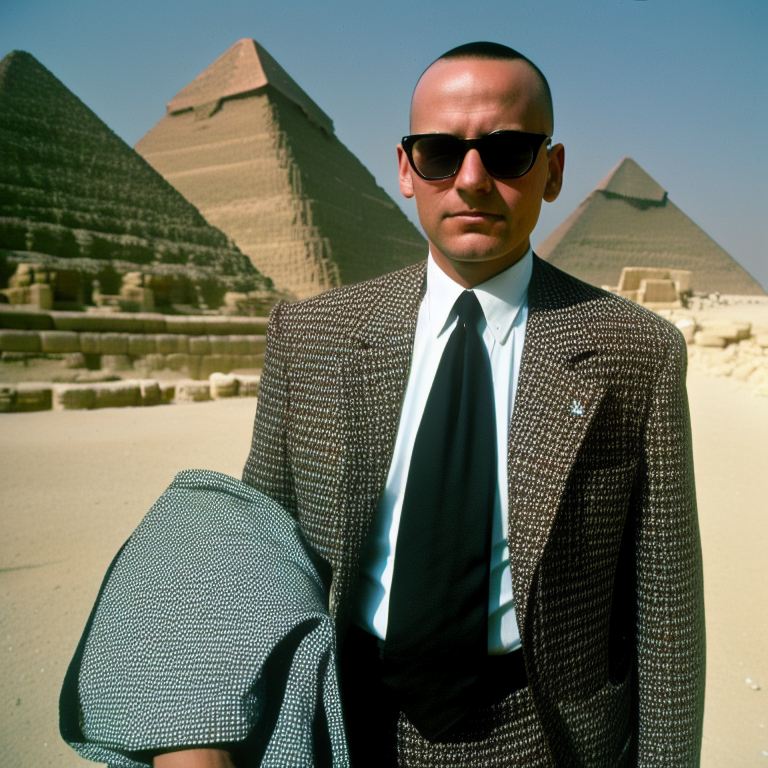
Patrick Chouinard is a distinguished expert on European history and authority on the White race and its roots. He has a BA in Global History and European Studies and currently is seeking an MA in Ancient and Classical History. He has authored six books and is a regular contributor to notable publications such as Ancient American magazine, The Barnes Review, Renegade Tribune, and Nexus. His expertise spans various facets of European history, showcasing a deep understanding and commitment to disseminating historical knowledge.



